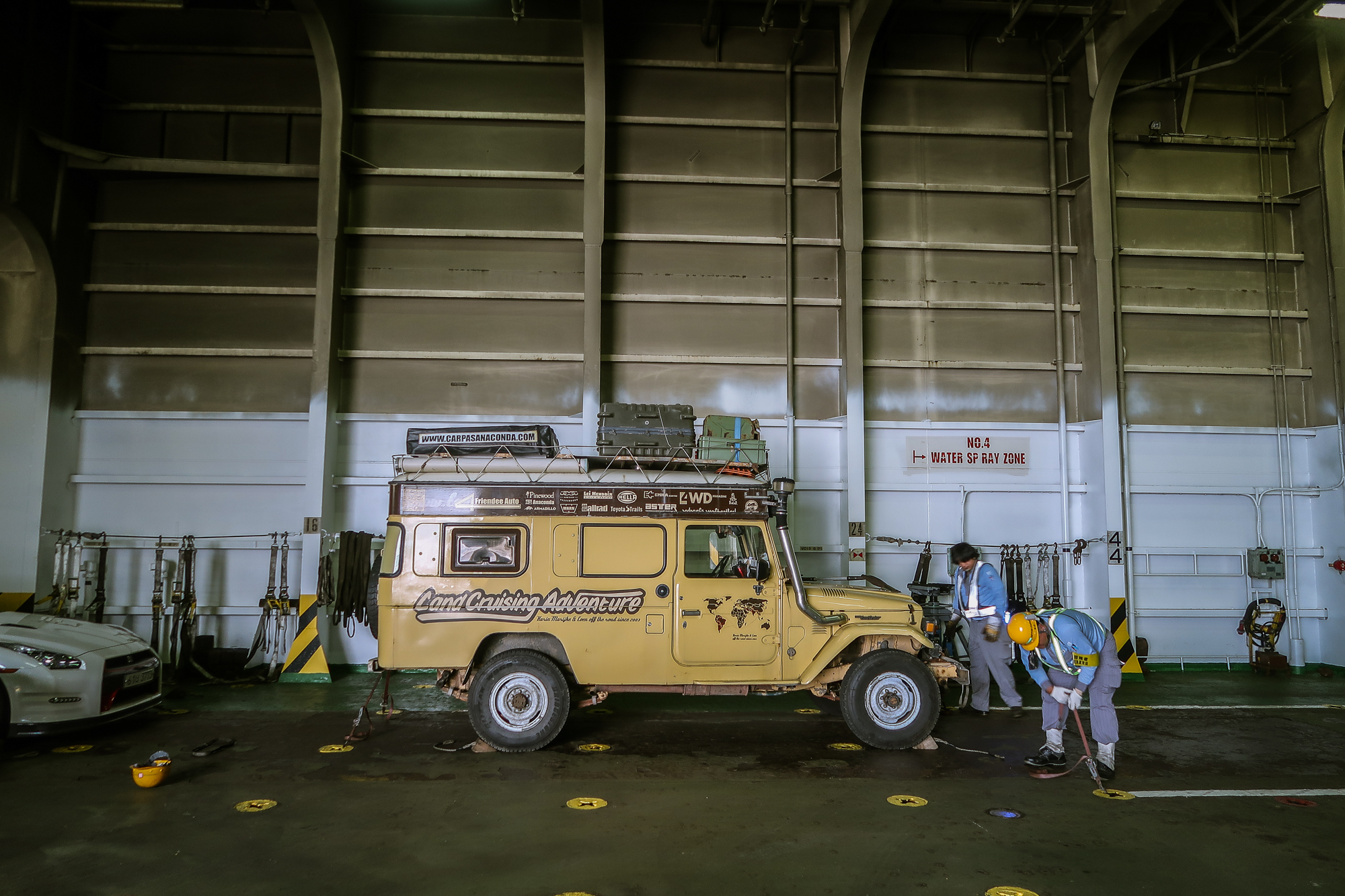Editor’s Note: This article was originally published in Overland Journal’s Spring 2022 Issue.
Photography by Coen Wubbels
The alarm clock sounded at 3:00 a.m. For the fifth morning in a row, Coen yawned as he threw his legs out of bed to once more get on the phone. We were in the Netherlands, visiting family while the Land Cruiser was being shipped from Malaysia to Argentina. Well, that had been the plan.
The shipping agency had promised to load our Land Cruiser on a cargo ship on December 23. It was January 6, and the Land Cruiser was still sitting in Kuala Lumpur’s port. The Powers That Be claimed that a signature was missing on one of the customs papers. The shipping company insisted on Coen’s flying from the Netherlands to Malaysia to solve the issue. And no, a fax wouldn’t do.
We had made one of the biggest mistakes when organizing the shipment of our Land Cruiser to the other side of the world: leaving the country before our vehicle did. We knew the risk, had gambled, and were now stuck between a rock and a hard place.
Shipping your vehicle is arguably one of the most stressful parts of international overlanding. If you’re traveling long enough, you’ll inevitably reach the end of a continent, and the only way to continue your journey will be to ship your car, truck, or motorcycle.
Suddenly, questions start flying through your brain, accumulating into a massive waterfall plunging into a deep pool, leaving you drowning in uncertainties. Should you use a container, roll-on/roll-off (RoRo), or lift-on/lift-off (LoLo)? And if a container, then 20-foot, 40-foot, high-cube, open-top, or flat track? What’s a bill of lading? Who is lashing the car in a container? Where to find a shipping line? And what in the world are all these fees (bunker, stuffing, lashing, unstuffing, port fees)? Let’s break it down.
1) Types of Shipping: Container, RoRo, Ferry, LoLo
RoRo generally applies to large, oceangoing vessels (car carriers), whereas ferries are usually used for river and shorter sea crossings. RoRo and ferries are good options for large vehicles that don’t fit in a container, and it is often less expensive for smaller vehicles.
Well-known RoRo Companies
Grimaldi: A shipping liner popular for larger vehicles needing transport between South America and Europe; cabins are available for a limited number of passengers. grimaldi-freightercruises.com
Wallenius Wilhelmsen; NYK Line, and K-line: A shipping liner with multiple RoRo routes across the world (no passengers allowed). walleniuswilhelmsen.com/
Seabridge: This is not a shipping liner but an agent service geared to overlanders. Their website contains a lot of practical information, including fees. sea-bridge.de
With container shipping, you drive your vehicle into a container where it is lashed down, and the doors are locked with a numbered seal before being loaded onto a cargo ship.
Regular containers are 20-foot and 40-foot. A “regular” car size (Land Cruisers, VW Combis, SUVs, etc.) will fit in a 20-foot. Sharing a 40-foot container can also be an option. Bigger vehicles may fit into a high-cube container (regular container, but higher), open-top container (sides, but no top; possibly covered with a tarp), or on a flat-track (open sides, no top).
With LoLo, your vehicle is craned on and off a vessel. It works for vehicles that are too large for containers or flat racks that need to be shipped from point A to B where RoRo is not available.
Motorcycles have the additional option of being crated and flown across the world, often the cheapest option. Air shipment is not included in this article.
2) Container Shipment Versus RoRo/Ferry
Routes Container shipment is possible from many ports in the world. RoRo lines are much more limited; LoLo even more so.
Security
- Regular 20-foot and 40-foot containers are the most secure form of shipping as they can be locked. You can bring a padlock for extra security as the shipping company only puts a numbered seal on the doors.
- RoRo/Ferry: Your vehicle will be in an open space with other vehicles, thus less protected against damage and theft than in a container. The same goes for high-cube, open-top, and flat-tracks.
- LoLo: Chances are that your vehicle sits in a port without any security as well as without protection on the vessel, increasing the risk of theft and damage.
Money and Paperwork
- When both RoRo and container liners ply the same route, RoRo is generally cheaper.
- Paperwork for RoRo or a ferry is often easier to deal with than with a container shipment.
Hassle
- Some RoRo companies require cars to be empty, although there may be an exception for campers; check details beforehand.
- Most shipments require the vehicle to be empty or near empty of fuel.
- With ferries, you will drive your vehicle on and off the boat yourself, whereas with RoRo, you may have to hand over your keys, and the company will drive your vehicle. In that case, isolate the driver’s unit from the rest of your vehicle to prevent quick access to your valuables.
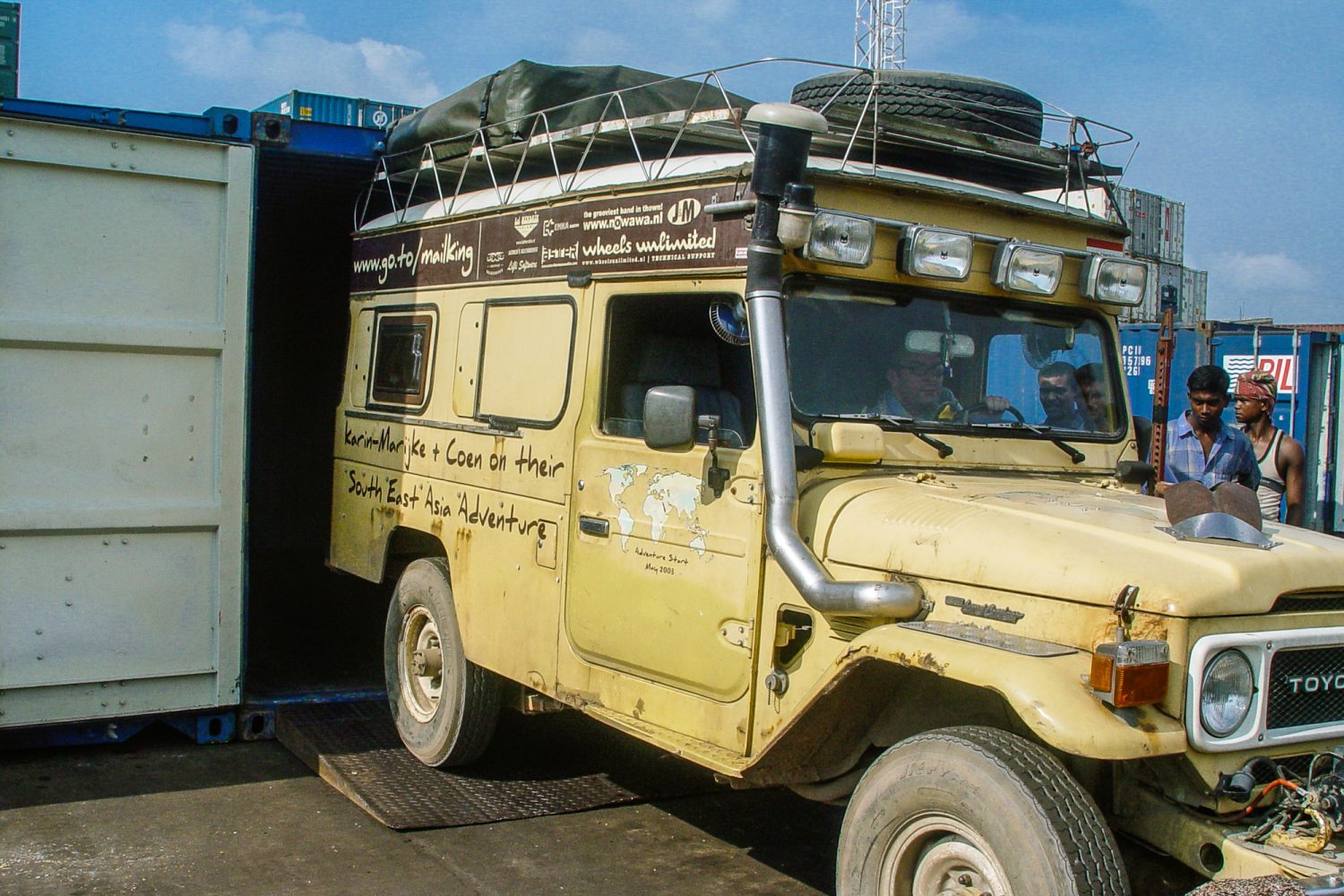
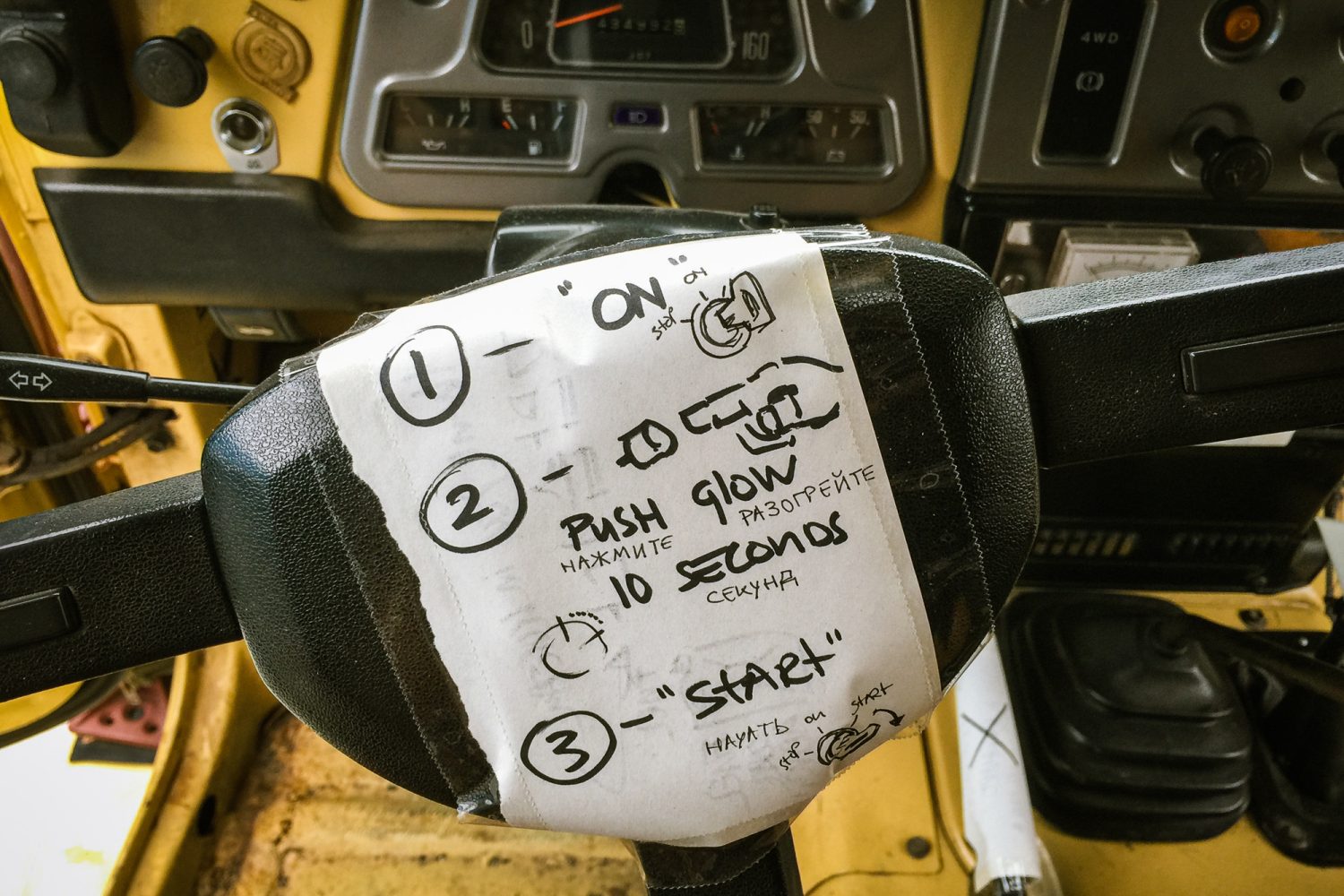

3) Procedure
Every car shipment has its specifics, depending on local, company, and port policies; this is what each procedure comes down to.
Step 1: Finding Shipping Routes
You have a few good friends here: Google, Facebook, and overlanding groups and forums. Facebook groups are great to get up-to-date shipping information and recommended names and phone numbers in the shipping world. Google will take you to main shipping line websites that have timetables and shipping routes. If you’re already in a seaport, check local newspapers or magazines that publish shipping schedules.
Tips:
- Find main shipping routes. The rarer the itinerary, the more expensive it is. For example, it’s not as evident to ship from Australia to South America as to Southeast Asia or Europe, which is something to keep in mind when planning your round-the-world trip.
- Be flexible with dates (a month later or earlier may make a difference), and check seasonal demand. Before Christmas, many container ships sail from China to Europe or the US filled to the brim but return empty, and this influences the price.
- Some ports are cheaper than others; local port and company fees can make a huge difference in your budget. By the same token, others are much safer and/or easier to ship to.
- Direct routes minimize the chances of something going wrong as opposed to those where your container has to change ships in ports along the way.
“Securing the vehicle in a container with straps and dunnage (chalking the tires) will help minimize damage to the vehicle, even if a container experiences a minor drop or falls to one side” -Scott Brady
Step 2. Get Quotes
Coen and I have had bad experiences requesting quotes from big shipping lines through email. Most never answer. That’s not surprising; in a world of massive car shipments, how interesting is shipping just one overland vehicle? Our tactic is to visit the shipping line offices to find the “right” person: the employee inspired by our story who wants to help and goes that extra mile to organize our shipment.
Although perhaps self-evident, request quotes from various companies. This can save you thousands of dollars. It also helps you quickly filter out the companies you don’t want to work with (the ones with outrageous quotes). Once narrowed down to two or three possibilities that sound reasonable or comparable, it’s time for the nitty-gritty part of the budget.
“Start checking routes and asking for quotes early, so you have time to find the best deal.” -Fran Calder
Fees can be divided into three parts: port of departure, ocean freight (the container), and port of arrival. The fee for the container is more or less the same for any specific route. Negotiation may save you just a few bucks or none at all.
Port fees can make a big difference in your budget. The more go-betweens between you and the ship, the more you pay. Here is where you have to make a decision to either do the work yourself or outsource some or all of the process. Note that some ports have restrictions on which part you are allowed to access. Sometimes you have no choice but to outsource.
Do it Yourself Versus Outsourcing
Low-budget overlanders and people who like to be in as much control as possible when it comes to bureaucracies prefer doing everything themselves, as do we. That means completing the paperwork on both sides, driving and lashing the vehicle, and unstuffing and driving the car out of the container.
Doing everything yourself is the cheapest option but is also the most complicated method to take by far, requiring time, patience, and a sense of humor. It’s important to know when to be persistent if necessary versus letting go. And while outsourcing costs more, it saves you time, energy, and frustration (although this is by no means a given). It can be particularly helpful in a country where you don’t speak the language.
Step 3. Organizing the Paperwork
Expect to be asked for a valid passport and visa, driver’s license and international driver’s license, and car documents such as registration papers, third-party insurance, and a carnet de passage.
At your destination, you will also need the bill of lading, proving your ownership of the vehicle, given to you after your vehicle is aboard the cargo ship. The delivery order should also be on hand, issued by the shipping line after arrival in the port of destination.
When the bill of lading is filled out, have your own name and passport number mentioned as the person on the receiving end. If somebody else ends up retrieving the vehicle, you can easily change this at the liner’s office at the port of arrival, where you receive the delivery order.
“Be patient and prepared for delays. Don’t pack for an overnight because you may be waiting for a week.” -Geneva Saint-Amour
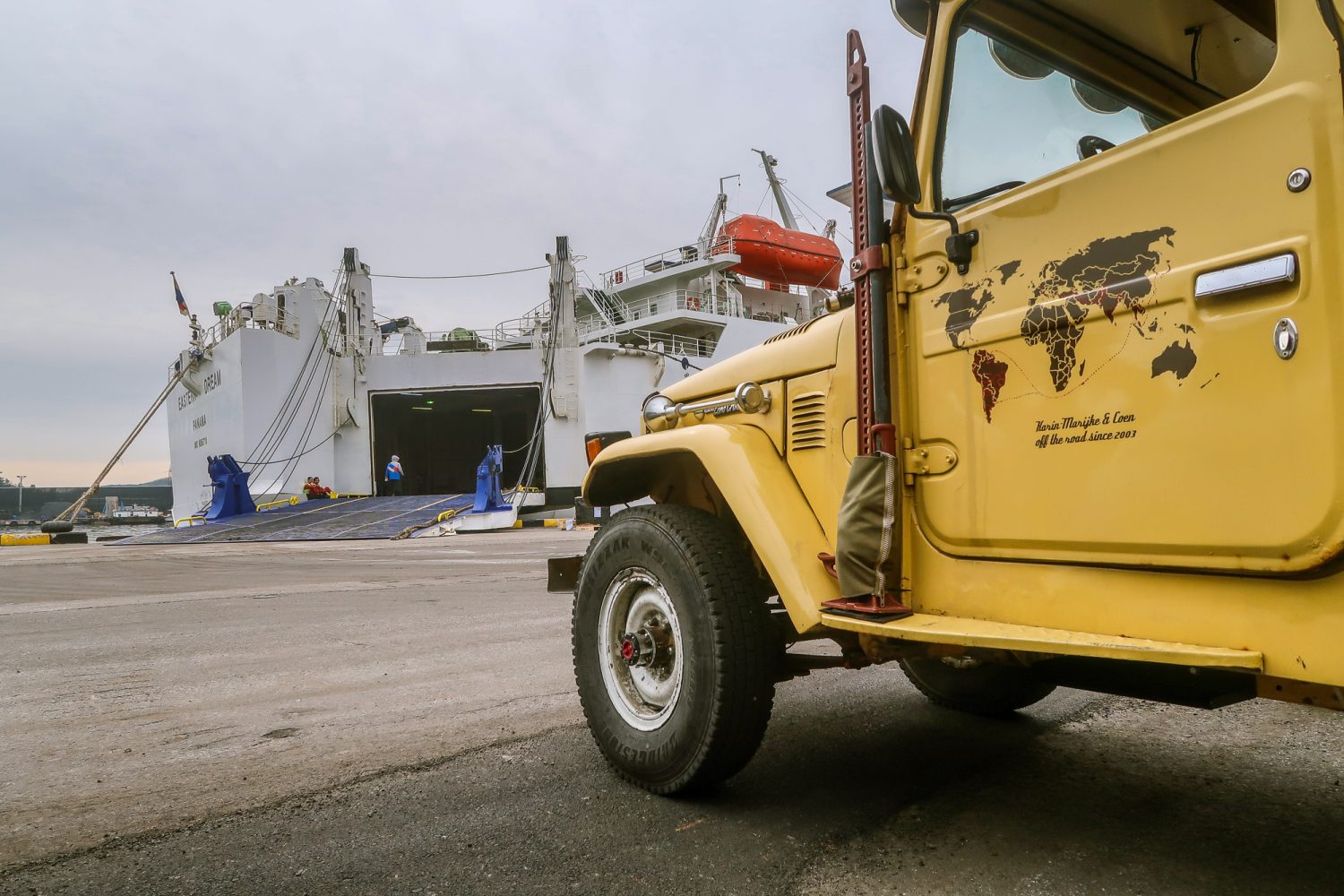


.
Organizing the Shipment Yourself
Do everything yourself, and you will be hopping from one office to the next. In both seaports, start at the shipping line, where you’ll have to pay a fee. They can tell you what the procedures are, what office to visit, or whom to contact to retrieve your vehicle.
Take the time to compare go-betweens (customs brokers/freight forwarders/handlers) and their quotes. Find the person you feel is interested in your journey and is, therefore, enthusiastic about helping you. It’s not a choice made based on budget alone; trust and enthusiasm are worth paying for.
Outsourcing and Using Go-betweens
Depending on how the port structure is set up, you may have a few or many go-betweens who can have all kinds of fancy-sounding professions. Simply put, you can divide the go-betweens into three levels.
Agent This person takes care of the entire shipping process and deals with the customs broker, freight forwarder, and shipping line. If done right, you won’t have any worries. To maximize outsourcing, opt for an agent who also finds shipping lines and routes for you.
Freight forwarder On both sides, you deal with the shipping line. But the freight forwarder takes care of customs and container loading.
Customs brokers This person takes care of customs paperwork and gets your vehicle into (or out of) customs’ jurisdiction.
To find go-betweens, Facebook groups and overland forums are good places to get the names of trustworthy people. Other options are asking around near the port, talking to local people, visiting go-betweens’ offices, and asking your shipping line.
The Bill of Lading
The most important piece of paper when shipping your vehicle is the bill of lading. Without it, you won’t get your vehicle back. To get it, you have to wait until your vehicle is on the cargo ship.
This is where things went wrong for us. I wanted to be back in the Netherlands for Christmas, and having had our share of delays in the process, I didn’t want to wait for that small piece of paper. The shipping company said it was no problem to send it to the Netherlands. However, our Land Cruiser ended up missing two ships, and we hadn’t received the bill of lading.
One evening, Coen remembered that during the Rain Forest Challenge—an annual off-road event in Malaysia’s jungle during the monsoon—he had met one of the highest officials in the Malaysian customs department. The man had given Coen his card, telling him to call him if he ever needed help. After five days of fruitless discussions with our shipping agency, Coen was in dire need of help. He placed the call. Twenty-four hours later, the Land Cruiser was hoisted aboard a cargo ship, and our South America journey had officially begun.
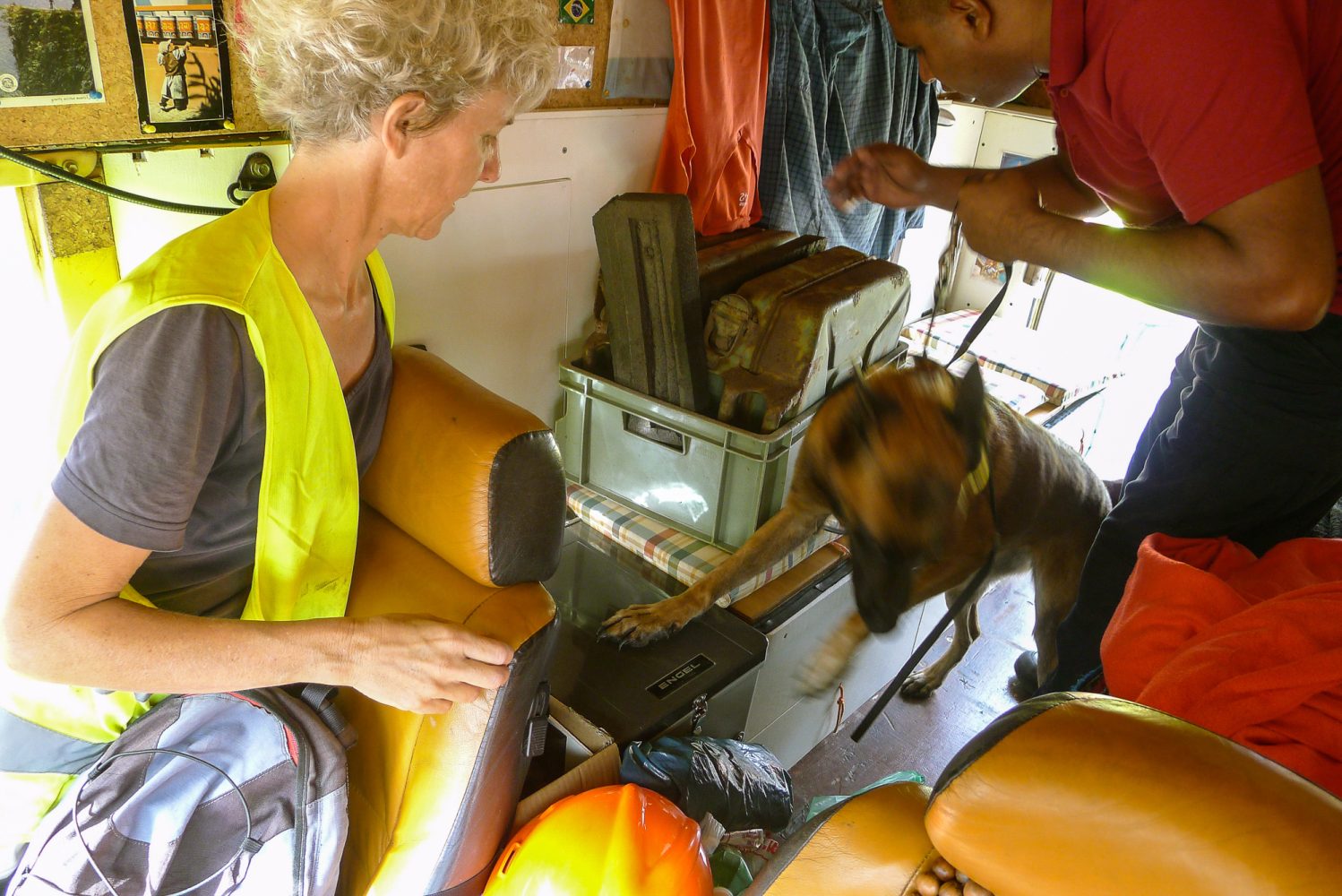
Suriname is a well-known drug smuggling country, so we were not surprised to undergo a total vehicle inspection before being granted access to our container.
Tips and Tricks
- Bring a bucketful of patience and kindness to help minimize frustration and stress. While you’re at it, bring plenty of drinking water and snacks—and a book.
- Calculate ample time for every step:
- a) Check the required time for paperwork. A fellow overlander was advised to be in the port of departure 10 days before sailing to allow sufficient time. We like to calculate an extra day or two on top of the advised time.
- b) Expect a two-hour procedure to last a full day or more.
- c) Start the documentation process as soon as you fly in at your destination—there is no need to wait until after your vehicle has arrived in the port.
- d) Expect your fuel tank to be largely empty or the gas tank(s) to have been removed.
- Some companies or ports require a spic-and-span vehicle, inside and out. Ask the shipping liner for details. Due to biosecurity risks, when shipping to Australia, ensure your vehicle is meticulously clean and free of contamination (internally and externally) before you load the vehicle in the container. The inspection on arrival is rigorous, and if your vehicle doesn’t pass inspection, you’ll have to get it cleaned by a professional company which costs a fortune. For further details, visit awe.gov.au/biosecurity-trade/import/goods/vehicles-machinery
- Make multiple copies of all possibly needed documents—don’t rely on a Xerox machine around the corner of the office where the documents are processed.
- For motorcycles: When shipping with your own container, you only need to lash the bike to the floor to hold it steady and firm. If using a shared container, however, you will need to crate your bike and extras such as the panniers and helm (wrap them with a bubble wrap for extra protection).
“Expat groups on Facebook can be a good source of finding local contacts such as agents and freight forwarders, especially in countries where overlanders usually don’t ship to or from.” -Wamuyu Kariuki
Shipping Terminology
Container
Ocean freight: Cost of your container
Stuffing: Getting the goods into the container and sealing it
Lashing: Lashing the vehicle in the container
Unstuffing: Getting the goods out of the container
Stuffing and unstuffing may or may not include trucking the container between the port and warehouse where you bring or pick up your vehicle.
B/L, BoL, or bill of lading: The official document describing the contents of the container
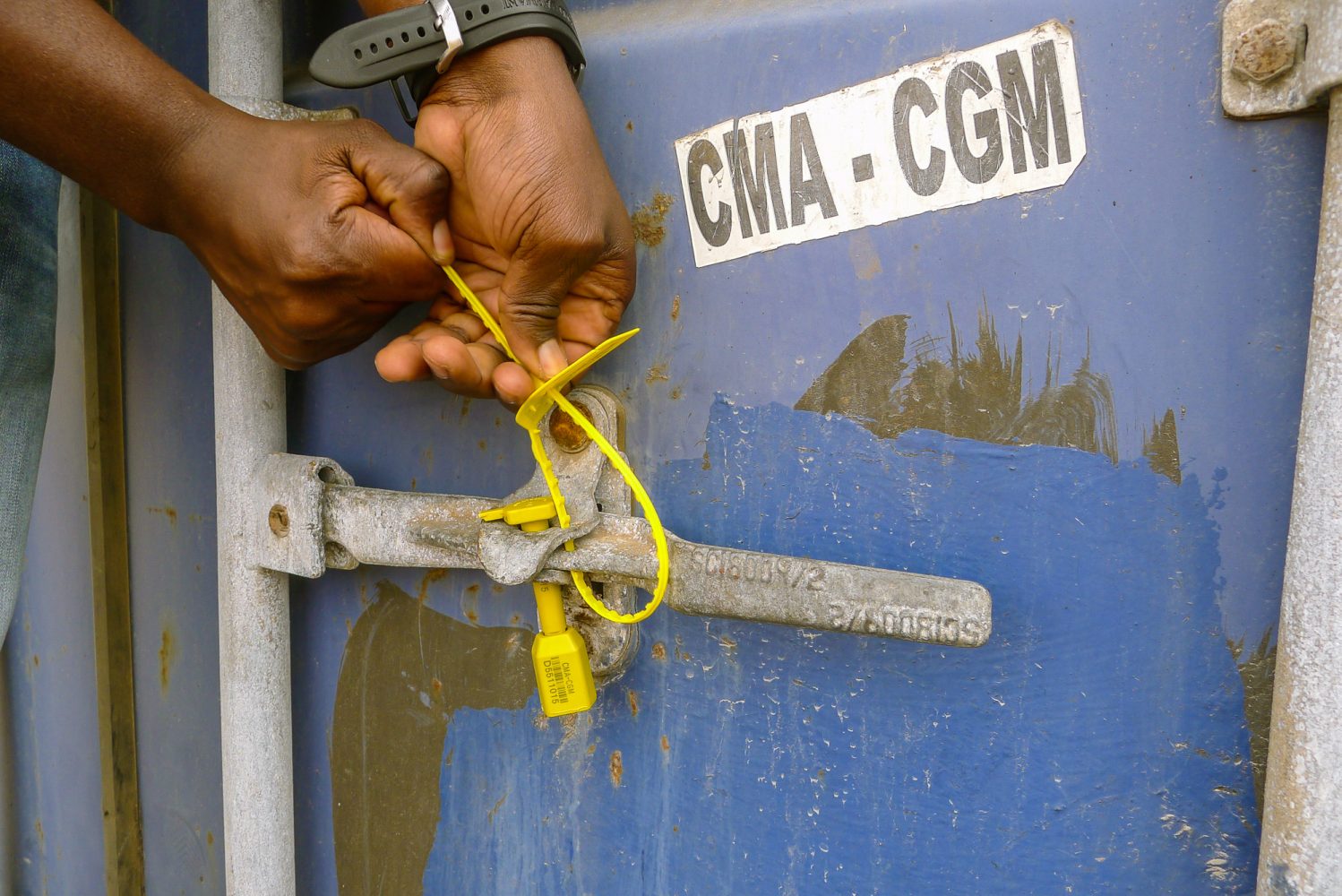

The container is locked and sealed with a numbered customs seal; additional seals are sometimes applied, such as when you pass a drugs audit.
Port
Documentation/customs clearance: All fees paid for the handling of your paperwork by the customs department
Congestion charges: An extra fee paid at busy ports where ships have to wait longer before being (un)loaded
Port, storage, or THC (terminal handling charges) fees: These may be added to the list on both sides of your shipping route. In our experience, they tend to say on the departure side that there will be no such fees in the port of arrival, but there are. There is nothing to be done about it.
Important: You are overlanding and temporarily importing your vehicle, so make sure there are no import duties.
Other
CAF (currency adjustment factor): Allows for changes in exchange rates during the journey
BAF (bunker adjustment factor): A charge covering possible fuel price fluctuations
Wharfage: A fee charged for the time the container sits in or passes through the wharf
Surcharges: Such as peak-season surcharge, security surcharge, etc.
Depending on how much you want to do yourself or outsource, you can eliminate or negotiate lashing/(un)stuffing/documentation or THC-related fees.
Ask about dock fees. Your container can stay a maximum number of days on the dock without charge. After that, fees will rise quickly.
“Never leave the country before your vehicle. Even after you have handed it over, things can go wrong.” -Julie Tuck
Shipping Resources
facebook.com/groups/vehicleshipping/
facebook.com/groups/panamtravelers/
Read more: Why Add the Pamir Highway to Your Overland Adventures
Our No Compromise Clause: We carefully screen all contributors to ensure they are independent and impartial. We never have and never will accept advertorial, and we do not allow advertising to influence our product or destination reviews.


